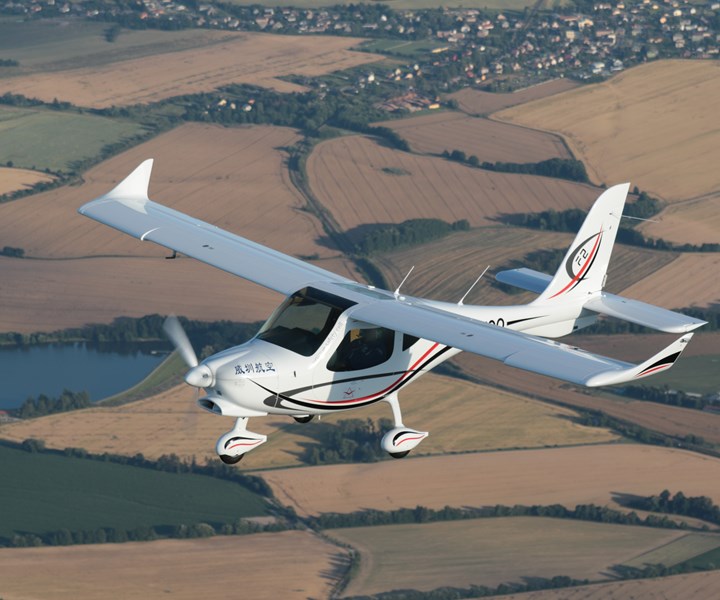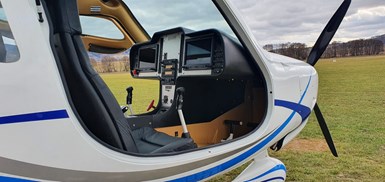Hexcel carbon fiber prepreg selected for ultralight aircraft design
German aircraft specialist Flight Design is using HexPly M79 for composite parts on its F2 aircraft.

Source | Hexcel
Ultralight aircraft specialist Flight Design (Hörselberg-Hainich, Germany) has chosen Hexcel (Stamford, Conn., U.S.) to supply low-temperature curing prepreg for its aircraft production. Specifically, Hexcel’s HexPly M79 carbon fiber prepregs have been selected because they reportedly deliver a more consistent final product by ensuring constant material quality and processing parameters and producing a lighter and stronger aircraft at a more competitive overall cost.
Flight Design has always relied heavily on composites for its aircrafts’ ultralight construction and turned to long-term composite materials partner Lange + Ritter, part of Hexcel’s European distribution network, when the company began searching for a prepreg material solution. Hexcel and Lange + Ritter created several new product codes specifically for Flight Design and then supplied materials for initial handling trials and prototyping. Hexcel’s HexPly M79 low temperature curing out of autoclave solution was first used in the new F2 prototype. As part of its material supply package, Lange + Ritter also sent a team for on-site training and technical support, allowing the Flight Design production team to get up to speed with prepreg as quickly as possible.

Source | Hexcel
Hexcel says that HexPly M79 prepregs can be cured at temperatures as low as 70˚C for eight hours or 80˚C for four hours, reducing tooling costs and increasing build rates. When combined with Hexcel’s air venting Grid Technology, HexPly M79 UD carbon tapes can also be laminated with reduced debulking steps to produce void contents <1% irrespective of laminate thickness. With consistently low void contents and improved mechanical properties, designers and engineers are able to further optimize highly loaded composite aerostructures.
According to Hexcel, more of Flight Design’s composite aircraft parts are being transferred to prepreg technology. The switch to HexPly M79 is reported to make lay-up cleaner and more precise, its low-temperature oven curing is quick and energy-efficient, and its manufacturing process consistently outputs exceptionally high-quality laminates and components. Hexcel says that Flight Design’s long-term strategy is to integrate HexPly M79 across the aircraft range.
“The materials and technology package from Hexcel and Lange + Ritter has been a big success for us at Flight Design,” says Daniel Gunther, managing director at Flight Design. “When we took the decision to switch to prepreg, we looked at many options but only Hexcel and Lange + Ritter could offer us low temperature out-of-autoclave (OOA) curing, globally respected material quality and the customer service levels we were searching for.”
Related Content
-
Sulapac introduces Sulapac Flow 1.7 to replace PLA, ABS and PP in FDM, FGF
Available as filament and granules for extrusion, new wood composite matches properties yet is compostable, eliminates microplastics and reduces carbon footprint.
-
PEEK vs. PEKK vs. PAEK and continuous compression molding
Suppliers of thermoplastics and carbon fiber chime in regarding PEEK vs. PEKK, and now PAEK, as well as in-situ consolidation — the supply chain for thermoplastic tape composites continues to evolve.
-
TU Munich develops cuboidal conformable tanks using carbon fiber composites for increased hydrogen storage
Flat tank enabling standard platform for BEV and FCEV uses thermoplastic and thermoset composites, overwrapped skeleton design in pursuit of 25% more H2 storage.

.jpg;width=70;height=70;mode=crop)














